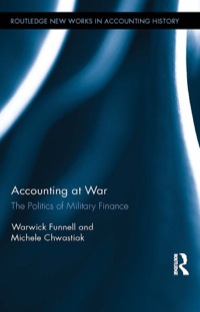Question
Climate Change and Economic Growth Consider an economy in which the level of output in year t (Y t ) is determined by the capital
Climate Change and Economic Growth
Consider an economy in which the level of output in year t (Yt) is determined by the capital stock (Kt) and the stock of greenhouse gases (GHGs) in the atmosphere (St). Population and technology are constant over time. Yt is measured in dollars of output per person; Kt is measured in dollars per person; and St is measured in tons of GHGs per person. The level of output is given by the equation:
Yt = 1000Kt0.25(1-a(St/1000)2)(1-b)
In this equation, the parameter a determines the economic costs of climate change the percent reduction in output that occurs when the GHG stock is 1000 tons per person. Damages increase with the square of the GHG stock. The parameter b reflects the costs of environmental policies the percent reduction in output caused by efforts to control GHGs.
10% of output is allocated to capital investment. So the change in the capital stock between years t and t+1 is given by:
Kt+1 = Kt + 0.1Yt
In the absence of control policies, each unit of output generates 0.002 tons of GHGs, and GHGs are removed from the atmosphere at the rate of 1% per year. So the change in the GHG stock between years t and t+1 is given by the equation:
S t+1 = 0.002Yt (1c) + 0.99St
In this equation, the parameter c represents the stringency of environmental policies i.e., the percent reduction in GHG emissions per unit of output.
In 2021, the capital stock is K2021 = 10,000 dollars per person, while the GHG stock starts out at S2021 = 500 tons per person.
Question #2 (high damages, no policies)
Now suppose that climate change would be relatively severe so that a GHG stock of 1000 tons per person would reduce output by 10%. In terms of the model, this implies that a = 0.1. In this case, how do output and the GHG stock evolve in the absence of environmental policies (i.e., when b = c = 0)? Add this new model run to the graphs you constructed for Question #1.
Step by Step Solution
There are 3 Steps involved in it
Step: 1

Get Instant Access to Expert-Tailored Solutions
See step-by-step solutions with expert insights and AI powered tools for academic success
Step: 2

Step: 3

Ace Your Homework with AI
Get the answers you need in no time with our AI-driven, step-by-step assistance
Get Started


